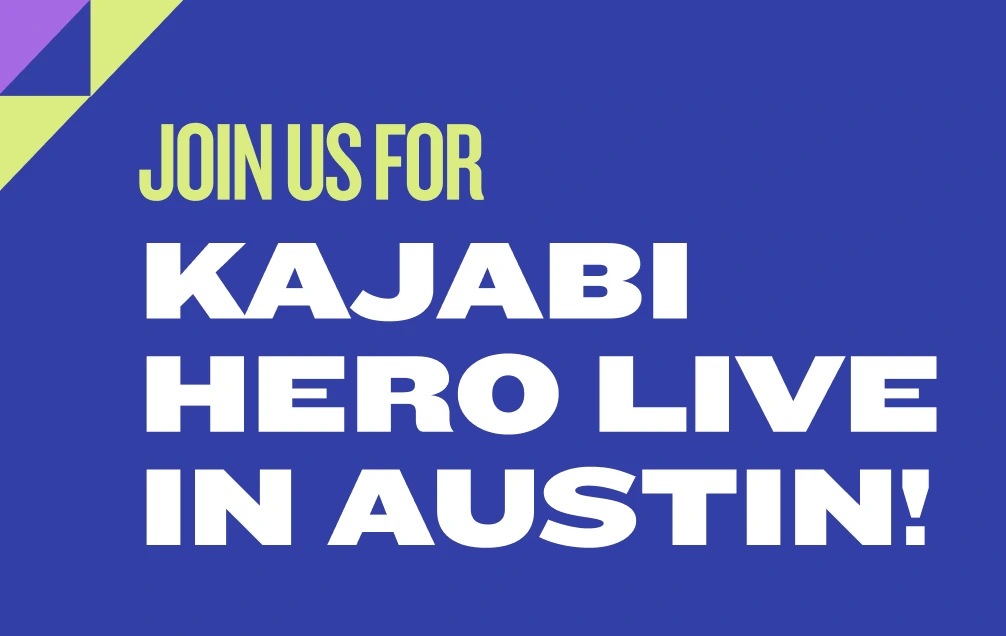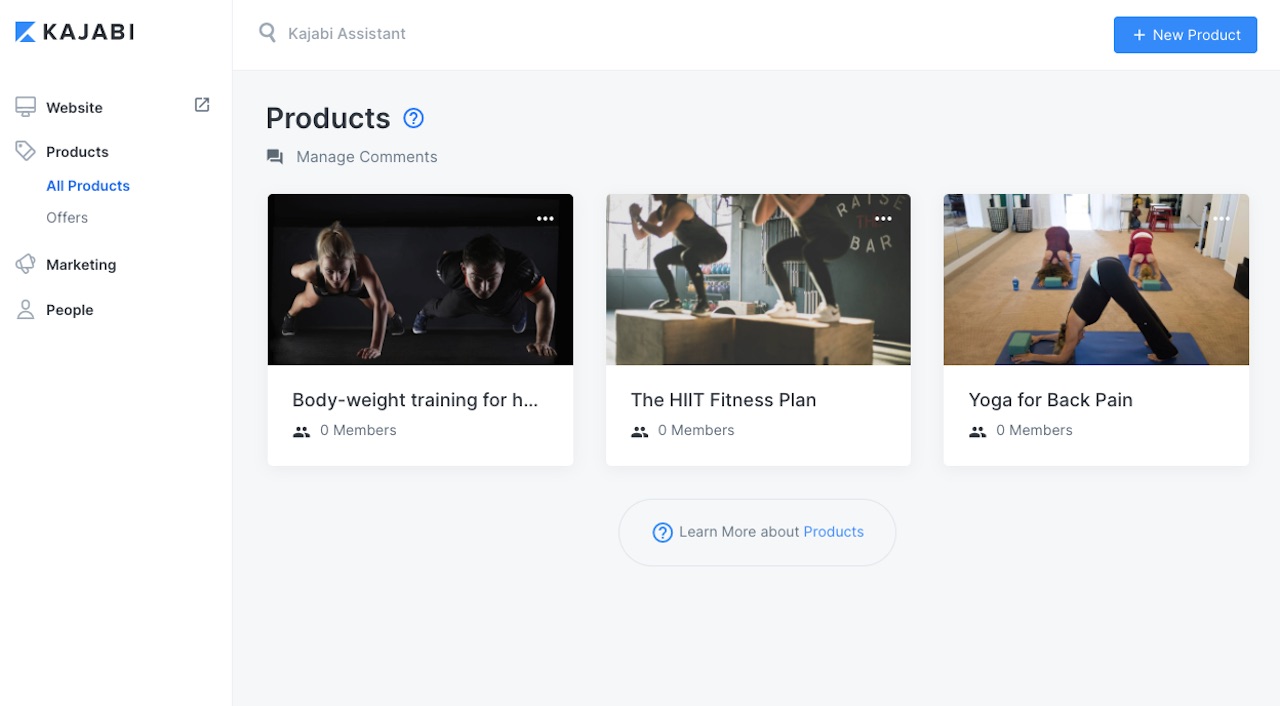
How to write an effective testimonial (9 steps + examples)
Get free expert insights and tips to grow your knowledge business sent right to your inbox.
Learning how to write a testimonial can help you elicit better testimonials from your customers. After all, if you don’t know what a great testimonial looks like, how can you know whether yours are effective?
Great testimonials can elevate sales pages and make landing pages stand out. They’re ideal for bringing new Knowledge Commerce customers on board.
Many businesses post hundreds (or even thousands) of lackluster testimonials on their websites. These testimonials often read like the review section of a product page on Amazon:
- Fantastic product!
- Couldn’t live without it!
- I can’t recommend [product] enough!
- Get one! You won’t be sorry!
Exclamation points aside, you might not see much wrong with these testimonials. After all, they’re enthusiastic and complimentary, right?
But they’re not specific or personalized. They don’t really say anything about the product.
Compare the review-style examples above to this fictional testimonial:
“I’ve gone through XYZ course three times now, and each time I pick up something new that I didn’t see before. I’ve used the course to 10x my performance in [goal]. At first, I wasn’t sure that an online course would answer all my questions, but [course creator] really knows her stuff! The video tutorials and printable checklists were instrumental in making sure I stayed the course and achieved my goals of [specifics]”
You see the difference, right? The testimonial above offers details, overcomes objections, uses statistical data, and praises specific parts of the course.
That’s what you want your testimonials to look like.
Now that we’ve covered the basics, we’re going to answer a few questions.
What is a testimonial? How do you write a good testimonial? Why are they effective? And what do the best testimonials look like on business websites?
What is a Testimonial?

A testimonial is a personal statement that highlights a product’s, service’s, or individual’s key qualities and abilities. It’s a way to advocate for a business and its products or services in a specific, detailed way.
Think of a testimonial as the most detailed review you can write. However, it’s focused on positive characteristics rather than a balanced review.
This doesn’t mean that a testimonial can’t include drawbacks or caveats. For instance, a customer might say that your online courses are better suited for certain types of people than others.
That’s fine. But you want your testimonials page to include as much praise as possible.
More importantly, you want diverse voices. If everyone says the same thing over and over again, each subsequent testimonial becomes less effective.
The best testimonials help prospective customers put themselves in current customers’ shoes. They see themselves in the testimony of other people and therefore find themselves wanting to explore what makes your digital products so wonderful.
The keyword you’re looking for here is resonance. Does the testimonial make your prospects want to know more about you? Does it excite, energize, and inspire them?
If not, you might have a review on your hands instead of a testimonial.
<p">That’s a key distinction, as we noted above. Reviews have their place, but testimonials are far more powerful.
Why Are Testimonials So Effective?
Speaking of powerful, why do marketers talk about testimonials all the time? What’s the big deal?
There aren’t a ton of statistics related to testimonials, but one 2013 study revealed that nearly 90 percent of B2B marketer responders certified them as the single most effective content marketing tactic (alongside case studies).
It’s easy to see why when you study consumer behavior.
Think about the last time you considered buying a product online. You probably visited the company’s website, and you might even have read testimonials.
Maybe you searched the product name on Google and visited review pages. You might have even asked your pals on social media whether they recommended it or not.
Why? Because you want to know what other people think. Consumers are social animals. We don’t like to be outliers — we want to be part of the tribe.
If we know that other people vouch for a product, we’re more willing to risk our money on it ourselves.
When it comes to generating leads, you need as many tools in your toolbox as possible. Testimonials can add more gravitas to your landing pages and help you drum up more leads and customers. Social proof matters more than the best copywriting in the world.
“Testimonials are also effective because they create balanced voices. Instead of filling your website exclusively with your own writing, you add other people’s voices, too.” #Kajabi — Tweet this!
Of course, consumers will also consider the source. If you have a testimonial from a household name, it will be given more credence than a testimonial from someone the prospect doesn’t know.
That’s why incorporating testimonials with influencer marketing has become so popular. As you work on corporate and personal branding, try to connect with people who have large audiences in your industry. Their recommendations of your product can skyrocket your sales.
Text Versus Video Testimonials
Most testimonials come in the form of text. They sometimes have photographs of the writer attached, but they’re written rather than spoken.
In some cases, video testimonials can be even more impactful. There are a few reasons for this:
- Video engages more of the senses than text.
- Prospects can relate more strongly to the speaker.
- It takes more time and effort to put together a video than to type a quick email.
If your customers are willing to create video testimonials, don’t discourage them. You can add both text and video to your website so prospects can choose what types of testimonials they want to consume.
How to Write a Testimonial
<>

Understanding the value behind a testimonial is important, but how do you write a great one? If you practice writing your own testimonials, you’ll learn how to get them from your customers.
Make a list of three to five products or services you’ve used in the last six months. Make them as varied as possible — a household appliance, an online course, a maid service, etc.
After you’ve chosen the products and services, write testimonials for each. Take your time (and follow the steps below) to craft engaging, inspiring narratives for people who might want to use those products and services for themselves.
Don’t stop there, either. Send those testimonials to the brands.
With this experience under your belt, you’ll develop a more critical eye when reviewing testimonials for your own website. You only want to showcase the best for your prospects — lukewarm sentiment won’t get you far.
Let’s take a look at the nine steps required to write an effective testimonial.
1. Describe a Problem to Solve or Goal to Hit
At the beginning of the testimonial, the writer should describe his or her position or situation before using the product. It’s all about conflict.
Think of a testimonial as a story. Without a goal to hit or a problem to solve, the narrative has no tension. Heroes need conflict to engage the reader
The same is true for testimonials.
For instance, maybe your customer wanted to lose weight, so he or she bought your fitness online course to shed a few pounds. That’s a common problem to solve, so it’s likely to resonate with your target audience.
It’s also great if the customer mentions trying competitors: “X, Y, and Z didn’t work, but this course fit the bill!” It shows your superiority over the competition and helps tip the scales in your favor.
Just remember that the pain point should relate specifically to your industry or niche. It could be generating more traffic for a website (marketing), improving photography skills (creative), or making money (business).
2. Provide Background Information
At this point in the testimonial, the writer needs to come across as human. What has he or she tried that didn’t work? Why did the writer want or need the product to begin with?
An aspiring shutterbug, for instance, might describe a lifelong interest in photography. Your course was what pushed him or her over the line between an admirer of the art form and a practicer of the hobby.
It’s kind of like human-interest stories in newspapers and magazines. People are naturally curious about others’ experiences, so incorporating personal details will make your testimonials more resonant and intriguing.
This doesn’t mean your customers need to bare their souls. This isn’t the time or place for a 3,000-word memoir. Instead, you want the writer to create a brief, engaging narrative that incorporates personal details as well as facts and figures.
3. Illustrate the Benefits of the Product or Service
This is perhaps the most important part of the testimonial. The writer needs to pinpoint specific benefits the product provided.
We’ll go back to the photography course example. The writer could extol the following benefits of the course:
- I got over my fear of picking up the camera and shooting.
- The course helped me choose inexpensive, but high-quality photography equipment.
- I got to avoid making common beginner mistakes with my first photographs.
- After taking the course, I entered a photography contest and came in second place.
All of these benefits show cause and effect. The writer took the course and enjoyed those benefits as a direct result.
Sure, other factors might have come into play — additional resources, natural talent, a lineage that traces to Ansel Adams — but the reader won’t consider those.
We’d like to break down features and benefits, though. They’re two different things.
The feature is an asset of the product itself. For instance, a vacuum cleaner’s features might include 2X suction compared to other brands, six accessories, and a HEPA filter.
Sure, features are nice, but they typically don’t tip the scales for consumers.
Benefits turn features into visceral experiences. In the vacuum cleaner example, we can easily change those three features into benefits:
- Get a deeper clean with less effort with 2X suction.
- Clean more things with the six attachments that work well on stairs, furniture, and vehicles, as well as allow you to get into smaller places.
- Avoid allergy symptoms and unhealthy bacteria thanks to the HEPA filter.
Can you see how turning features into benefits makes a product more appealing?
The same thing goes for testimonials. You don’t want your customers to talk about the 10 videos included in the course or the bonus printable materials without talking about how they directly benefited from those features.
4. Show How You Overcame Objections
An objection is an excuse for a consumer to decline to buy a product. There are lots of different types of objections your target audience might consider when evaluating your digital products.
Price is one of the most common objections. It can happen at any price point.
The customer thinks, “I can do something else with the $100 I’d spend on this online course.”
It’s your job to convince the customer that your course is not only worth the $100, but is actually better than anything else they could do with that money.
Testimonials are extremely useful for overcoming objections. When consumers see that other people have looked past them, they feel more comfortable doing so themselves.
For instance, related to the pricing objection, a testimonial writer might say something like this:
“At first, I wasn’t sure about spending $100 for this course, but now that I’ve taken it, I’ve saved more than twice that amount on mistakes I might have made otherwise.”
Do you see how the writer can turn an objection into a benefit? Sure, the customer shelled out $100, but they saved twice that amount.
Other objections might include the following:
- Availability of free resources on the Internet or elsewhere
- Time required to devote to the course
- Difficulty of learning the platform
- Competitors’ products
In a testimonial, your customer needs only address a single objection. Of course, if they cover more, you’ll be even better off.
5. Provide Specific Details and Data
Any part of a testimonial that includes specific details and data becomes stronger for it. Specific numbers or details make the testimonial more compelling.
To illustrate this fact, let’s look at two statements:
- Thanks to your course, I saved a lot of money on household expenses.
- After taking your course, I saved $200 on household expenses in the first month alone.
Which one would be likely to get you to overcome objections? The second one, right?
It’s far more specific. The customer didn’t just “save money” — he saved $200. Not too shabby.
Furthermore, he didn’t just “save $200” — he saved all that money in just one month. That’s even better!
Some results are harder to quantify than others. Let’s go back to our photography example.
A customer can’t very well say, “I’m 30 percent better at photography than I would have been without this course.” That’s disingenuous because there’s no way to know for certain.
However, a testimonial writer can make up for those abstractions by providing specific details in other ways:
- I feel more comfortable behind the camera thanks to [creator’s] detailed instructions.
- My Flickr account has gained 200 followers since taking this course and posting new images.
- After seeing my portfolio, I’ve received 20 requests to photograph weddings and other events.
6. Mention the Creator’s Name
This might seem obvious, but many testimonials leave out specifics like the creator’s or business’s name. While it’s not a huge deal, including the name makes the testimonial more personal.
More importantly, it’s great for SEO and brand awareness.
You might post testimonials in other places besides your website or blog. Without your name mentioned in the text, the testimonial loses context.
Readers don’t know who the author is talking about and might therefore simply skim over it.
However, when your name is included, people start to recognize it. They become more brand-aware and therefore more likely to purchase your digital products.
Additionally, you want your name and brand to rank in Google. That’s essential for brand awareness and gaining organic search traffic.
What if the author posts the testimonial on his or her own website and links to your site? That link passes SEO juice to your website, which helps your rankings. And, if your name is included, it provides context for Google.
7. Include a Photograph or Video
We mentioned above that video testimonials can often be more powerful than text-based testimonials. If your customers are willing to create videos, encourage them.
You can also humanize a testimonial through a still image. It shows that the writer is willing to stand behind the review with an image, a full name, and perhaps a link to his or her website or social media profile.
8. Link to the Testimonial Creator’s Website
Speaking of links, always ask if you can include them. There’s a good reason for this.
If you have a testimonial with a person’s name and no link, there’s no way to verify the review. In other words, you could have written it yourself and posted it on your website. There’s no way to prove it didn’t happen that way.
Consumers are more savvy than ever before. They’re skeptical of any marketing strategy because they know marketers want to sell their products.
If you can take away those nagging doubts in the backs of your prospects’ minds, you get much closer to a sale.
9. Ask for Testimonials
Let’s face it: People are lazy. We don’t like to put forth extra effort, so we don’t look for ways to take up more of our time.
That’s why it’s critical to ask for testimonials.
Your customers might do it on their own if they’re so blown away by your course content that they can’t not say something. You might develop rabid fans who take it upon themselves to become ambassadors and advocates for your brand.
That’s rare, though, especially when you’re first starting out.
You can ask for testimonials in several ways. The easiest (and most generic) is to include a call to action at the end of your online course or other digital product. You might say something like this:
“If you enjoyed this product, please let me know! I love to hear from my customers about what they loved and how they think I can improve.”
This tells your customers that you’re open to feedback, but it sets the stage for positive engagement. Starting with “If you enjoyed this product…” sends a subtle signal to the customer’s psyche.
You can post similar entreaties on your website and social media. Engage with your followers and invite them to review your products.
Another option is to get in touch directly. Yes, email outreach takes more time, but it’s worth the extra effort.
Why? Because people love to be singled out and appreciated. It shows that you’re willing to go the extra mile for your customers and to solicit their feedback.
An email might look something like this:
“Dear John,
Thank you so much for buying my online course, “How to Make a Grilled Cheese Sandwich.” Your support means a lot to me.
I’d love to know what you thought about the course. I’m asking my favorite customers to write testimonials for my website. Taking a few minutes to provide your feedback can help me grow my business. I’ll also include a link to any website you like, which can help boost your SEO.
If you’re uncomfortable with this, please don’t worry about it. However, if you’d like to add your feedback to my site, just reply to this email with your thoughts. I’ll be forever in your debt.
Thanks again, John!
Sincerely,
Jane
<p">Grilled Cheese Courses”
It’s that simple. You can personalize your email however you want, but make sure it doesn’t seem like a mass email.
Examples of Awesome Testimonial Pages
Now that we’ve covered the steps required to write a testimonial, let’s look at a few examples of testimonial pages done right.
First, check out the testimonials page for DesignCuts. The company offers graphic assets and bundles for businesses that don’t have internal resources to create their own.
The testimonials page looks like this:

We like that the heading and subheading reflect the page’s purpose. They show that they value their customers and their feedback.
You’ll notice that each testimonial includes a photograph of the writer and the author’s URL. We’d like to see those URLs links, but otherwise, it’s a great example.
Then we have mHelpDesk, which incorporates text- and video-based testimonials in a visually pleasing layout:

The home-video strategy looks great for prospective customers, and the text helps with SEO and with prospects who might not want to watch videos.
We also like the diversity here. Each testimonial highlights different features, goals, problems, and solutions related to the brand.
Then we have productivity platform Slack. Its testimonials page — labeled “Customer Stories” — does a great job of marrying different types of media to keep prospects engaged:

The headings for each testimonial are great. They immediately highlight a way in which Slack has helped the customer in a specific way.
Use Kajabi To Turn Your Knowledge And Content Into Products You Can Sell
When it comes to Knowledge Commerce, we know our stuff. That’s why we created Kajabi. It’s the ideal platform for anyone who wants to become an entrepreneur and create digital products like online courses and a membership site.
If you don’t believe us, sign up for our 14-day free trial. You can experiment and play with all of Kajabi’s features without a commitment. Plus, you can start creating your very own online course the minute you sign up.
We’re confident you’ll find everything you need within the Kajabi platform, from course-creation tools to marketing assets. Plus, we add new features all the time to make selling easier for our customers.
Using Testimonials to Boost Your Business
Testimonials are personal stories your customers share about your products. They help prospects decide to buy your digital products by illustrating social proof.
There are lots of advantages to getting people to submit testimonials. First, though, you need to learn how to write a testimonial yourself.
Start by describing a problem to solve or a goal to hit. This is what you wanted to achieve when you first bought the product.
Next, delve into some background information. Why were you interested in the product? What compelled you to search for it.
The rest of the testimonial should be devoted to illustrating the product’s benefits, demonstrating how you overcame objections, providing specific details, and adding extras like the creator’s name and the author’s personal information.
You can use the examples we showcased to help you create your own testimonials page. Plus, once you’ve practiced writing your own, you’ll know how to spot a great testimonial when one of your customers submits it.
Just remember - your customers won’t always review your products on their own. You need to ask them. Email outreach is the most effective strategy, but you can also send out requests on social media or your blog.
Have you gotten testimonials from your own customers? What’s your best strategy?













